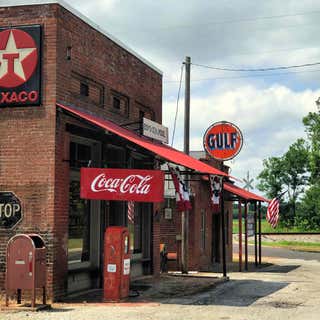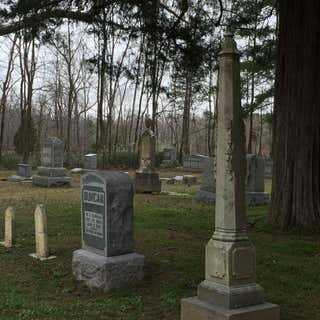Error generated location
Worth a stop but only if you are already in the area. The address take you out to a turn around gravel parking lot near the Hatchie River. The actual information on the battlefield is up the road and it is also a pull over area. There is a close gate you can walk up to and read the signage about the incident that occurred there. There is another pull over area close by that you should stop at if you are already in the area for Metamora Hill and the battle that took place there.
This location is permanently closed. Check out other location in Martin TN
A bit off the beaten path but a cute detour. “Downtown” Fruitvale is a single street of well preserved buildings giving you a glimpse of times past. Charming and nostalgic.
Permanently closed
Site where Buford killed “The Butcher of Chewalla”
The Botel sadly has been torn down as of this year 2020
Good food, great hush puppies
The oldest Presbyterian church in west Tennessee was founded on Cub Creek in 1821, before the town was settled. The congregation moved to Denmark but outgrew its home at a Baptist school. Using slave labor, the Snipes brothers had the church‚ built in just six days in 1854, and the church was ready for worship the next Sunday. It originally also housed Masonic Lodge #154 on the second floor. Many signatures of Masons are still visible on the wall and door of the lodge. Civil War-era stories include that of Confederate soldiers hiding under the hoop skirts of their sweethearts when Union troops searched the church during a Sunday service. The Denmark cemetery is on the original site of the Denmark Presbyterian Church, the largest cemetery in the area. Graves there date back to 1823, including many Civil War soldiers. Two soldiers' bodies were brought to the cemetery after the Battle of Britton Lane just four miles away. It includes a mass grave of Mass grave of 28 Confederate soldiers killed in 1863. Many headstones are made of white Italian marble. General John Ingram, commander of the Denmark Danes during the Civil War, is buried at Denmark Presbyterian cemetery. The building is listed on The National Register of Historic Places and Tennessee Trail, and is overseen by the Big Black Creek Historical Association. Plans are to convert the church to a museum when repairs are complete.
It is a two-story gable-front frame building with Greek Revival architectural elements.It was added to the National Register of Historic Places in 1983 an example of the Greek Revival style.
In 1908 Judson Moss Bemis, founder of the Bemis Bro. Bag Company, provided for a the construction of a church without cost to the community. Mr. Bemis was in attendance as the chuch was dedicated on April 19, 1908 as the Union Church. At this time an endowment of $600 per year was set up as the passtor's salary. This endowment continued until 1974. The structure of the church is Old English architecture. The materials were cut in Boston and shipped to Bemis by railroad to be assembled on site. The front entrance has a gable roof over arched openings; the side walls have engaged buttresses. Mr. Bemis' son, Albert, a graduate of MIT in Boston, hired architects from the Boston area to help in the design of not only the church but other structures in the Village. Some say the sanctuary ceiling reminds them of the shape of a boat. The church was originally used by the Baptists, Methodists, Pentecostals and followers of the Church of Christ. Over time, due to enlarging the Mill, a population increase caused the church to need an addition. The Chapel was added in 1922 and was built of concrete and stucco.











